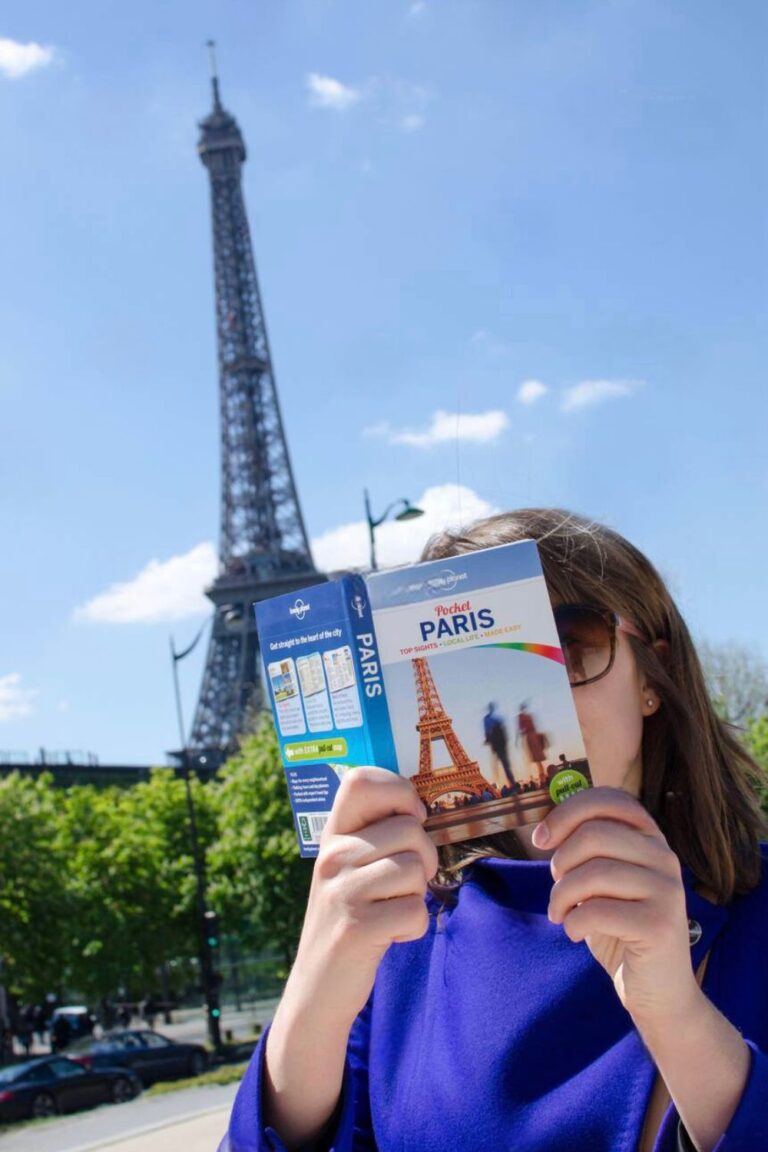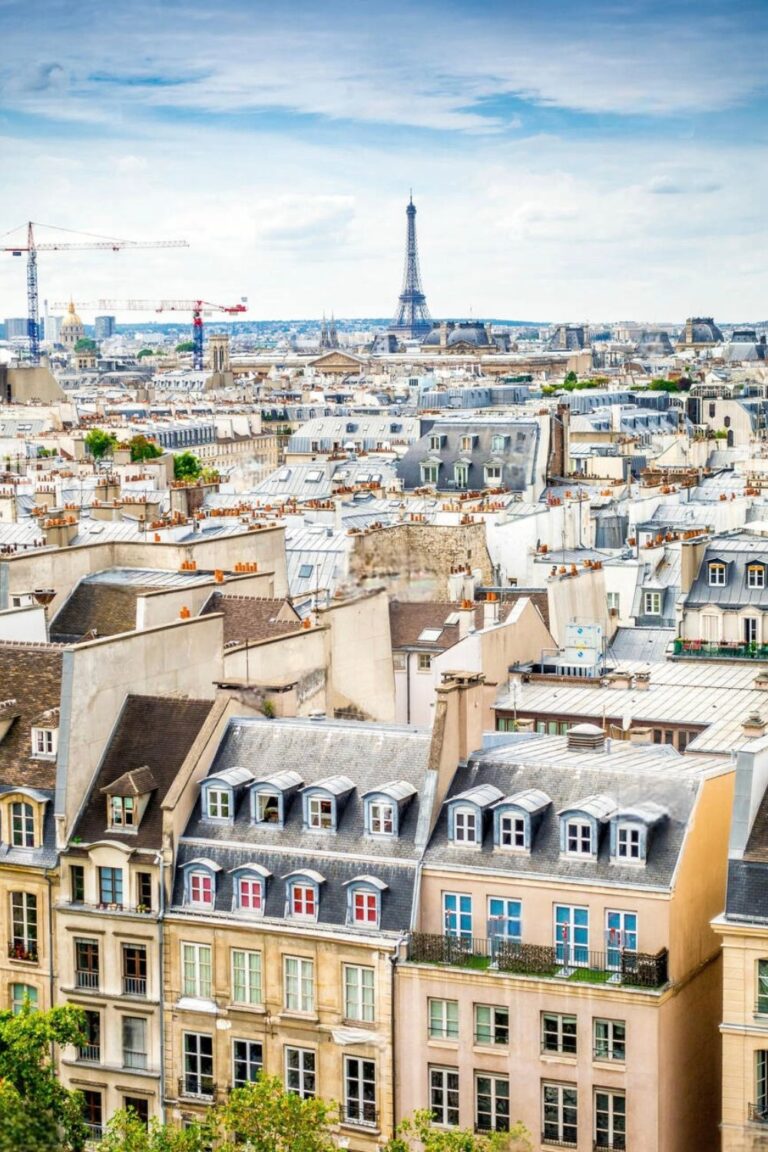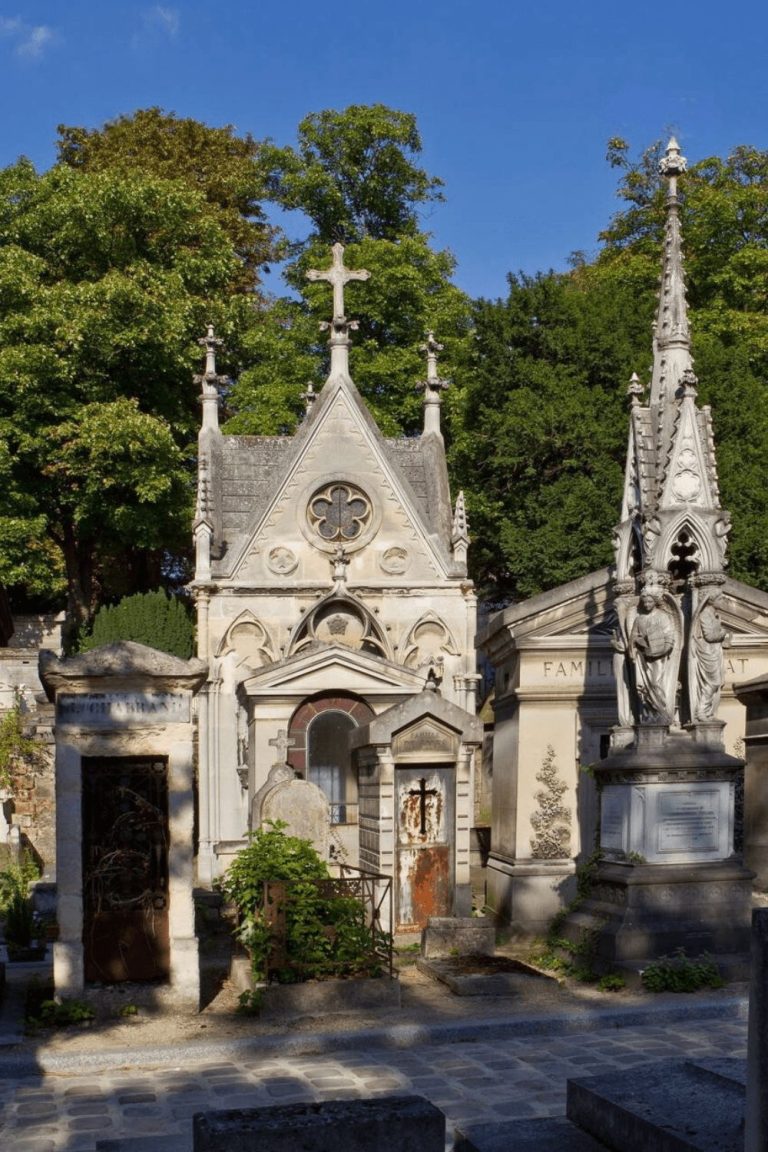How to Use the Metro in Paris and Explore Like a Local
Last Updated on October 9, 2024 by April Nicole
Psst! This blog post about how to use the metro in Paris contains affiliate links in it which sends me a bit of extra money if you use them… at no extra cost to you. For more info, see the Disclosure Policy. Merci!
Traveling to Paris? Click here to download your free Paris Travel Guide. We’ll help you get ready for your trip!
Navigating the Paris Metro system can be daunting for both tourists and new residents.
The vast network of trains and the complexities of its routes can often lead visitors to feel overwhelmed, making the need for a clear and concise guide essential.
As someone who has lived in Paris since 2021 and relied on its public transportation for daily commutes, I’ve mastered the ins and outs of the metro.
Drawing from my experiences, I aim to simplify your metro journeys with practical tips and tricks. From purchasing tickets to understanding the map, this guide will equip you with all the necessary tools to travel like a local.
Armed with this knowledge, you’ll be able to navigate the bustling Paris Metro system confidently and efficiently, turning what can be a confusing part of your visit into a smooth and enjoyable experience.
If you are in a hurry, here’s a summary of how to use the metro in Paris:
Understanding the Metro System

Overview of the Metro Lines
The Paris metro system is a marvel of urban planning, designed to provide efficient and widespread coverage throughout the city. The 16 lines are identified by a number and color, making navigation intuitive once you familiarize yourself with the basics.
For instance, Line 1, marked in yellow, runs from La Défense in the west to Château de Vincennes in the east, cutting through the heart of the city and connecting several key attractions and business districts. Line 2, identified by its blue color, connects Porte Dauphine in the west to Nation in the east, passing through iconic neighborhoods and landmarks such as Montmartre and the Père Lachaise Cemetery.
Each line has its own unique route and set of stations, catering to different areas of Paris. Line 3, for example, stretches from Pont de Levallois – Bécon in the northwest to Gallieni in the east, providing access to important residential and commercial zones. Line 4, one of the oldest and busiest lines, runs from Porte de Clignancourt in the north to Mairie de Montrouge in the south, intersecting with nearly every other line and serving major transit hubs like Gare du Nord and Châtelet.
Metro Map
A crucial tool for navigating the metro is the metro map. These maps are omnipresent in every station and can also be found online or in travel guides. It’s highly recommended to download a digital version to your phone for quick and easy access. The map visually represents the entire metro network, with each line color-coded and numbered for clarity. Stations where lines intersect are highlighted, making it easier to plan transfers and navigate complex routes.
Understanding how to read the map is essential. Each line is depicted as a colored path, with stations marked along it. Key stations, often larger and busier, are usually indicated with larger icons or symbols. For tourists, locating major attractions on the map first and then identifying the nearest metro stations can simplify planning. For instance, the Eiffel Tower is near Bir-Hakeim on Line 6, while the Louvre is accessible via Palais Royal – Musée du Louvre on Line 1.
Operating Hours
The Paris Metro operates from approximately 5:30 AM to 12:30 AM from Sunday to Thursday. On Fridays, Saturdays, and the nights before public holidays, the service extends until about 1:30 AM to accommodate the city’s vibrant nightlife. It’s important to note these hours, especially if you plan on staying out late or catching an early train or flight.
Additionally, service frequency varies depending on the time of day and the line. During peak hours, trains arrive every 2-3 minutes, ensuring minimal wait times. Outside of peak hours, the frequency decreases, with trains arriving every 5-10 minutes. Late at night, the intervals can be longer, so it’s wise to plan accordingly and check the schedule for your specific line.
Buying Tickets and Passes
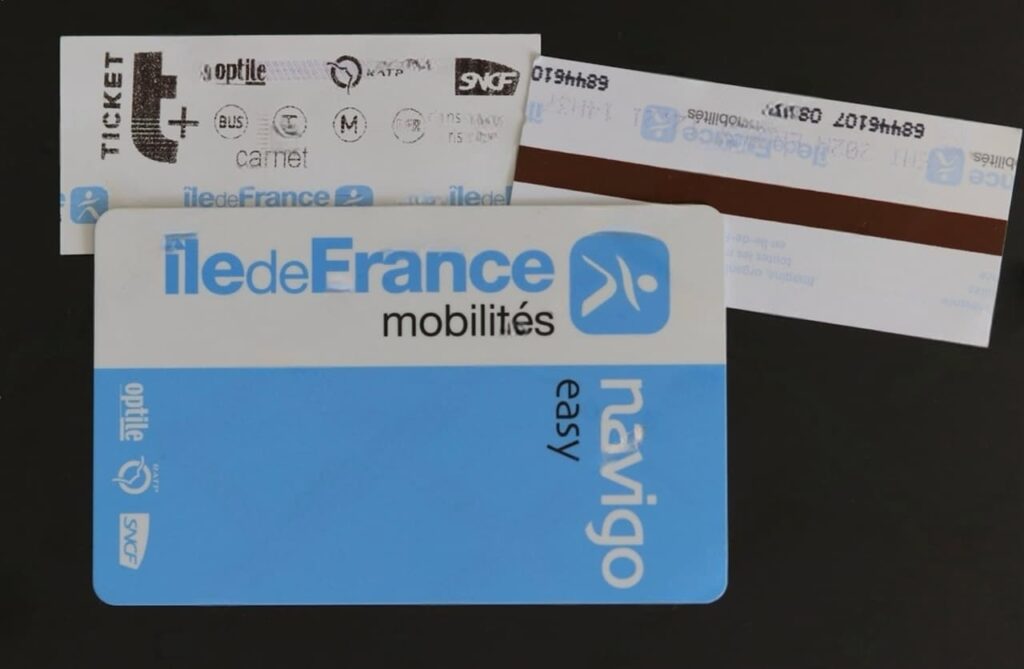
Types of Tickets
Navigating the ticketing system of the Paris Metro can initially seem daunting, but it becomes straightforward once you understand the different types of tickets and passes available. The most common and simplest option is the Single Ticket (Ticket t+). This ticket is valid for one journey, including transfers within the metro and RER networks within Paris, as well as on buses and trams. It’s a versatile choice for short, single trips.
For those planning to use the metro frequently over a short period, purchasing a Carnet is more economical. A carnet consists of 10 single tickets sold at a discounted rate compared to buying individual tickets. It’s perfect for tourists who intend to explore various parts of the city without worrying about buying tickets for each journey.
For tourists seeking unlimited travel, the Paris Visite Pass is an excellent option. Available for 1, 2, 3, or 5 consecutive days, this pass offers unlimited travel across the metro, RER, buses, trams, and even the funicular at Montmartre. Additionally, it provides discounts at various museums and attractions, making it a valuable investment for avid explorers.
The Navigo Pass is ideal for longer stays. Available in weekly or monthly formats, this pass offers unlimited travel within Paris and its suburbs. It’s particularly beneficial for those staying in Paris for an extended period and planning to commute regularly. Note that the weekly pass runs from Monday to Sunday, and the monthly pass is valid for a calendar month, so plan your purchase accordingly.
As of 2024, it costs €2.15 per ticket, and is also available as a pack of ten tickets (a carnet) for €17.35 on Navigo Easy.
Where to Buy Tickets
Tickets and passes can be purchased from several sources, ensuring convenience regardless of your location. Ticket Machines are ubiquitous in all metro stations. These machines offer instructions in multiple languages and accept cash and credit cards, making them accessible for international travelers. The machines are user-friendly, with touch screens guiding you through the purchase process.
Ticket Counters staffed by RATP personnel are available in major stations. These counters are particularly useful if you need assistance or have specific questions about the best ticket options for your stay. The staff can provide valuable advice and help with any issues you might encounter with ticket machines.
Certain passes, like the Paris Visite Pass, can be purchased online in advance. This allows you to plan your travel ahead of time and avoid queues at ticket machines or counters. Online purchases can often be picked up at designated locations upon arrival in Paris, providing a seamless start to your metro experience.
Validating Your Ticket
Before entering the metro, it’s crucial to validate your ticket. This process ensures that your journey is recorded and that you’re in compliance with the metro system’s regulations. To validate a paper ticket, insert it into the slot at the turnstile. The machine will stamp the ticket with the date and time, and the turnstile will open to allow entry. Hold on to your validated ticket throughout your journey, as you may need to present it during ticket inspections.
For those using a Navigo Pass or a contactless Paris Visite Pass, validation is even simpler. Tap your pass on the reader at the turnstile. A green light or a beep indicates successful validation, and you can proceed through the turnstile. Remember to keep your pass handy in case you need to exit through a turnstile that requires re-validation.
Navigating the Metro
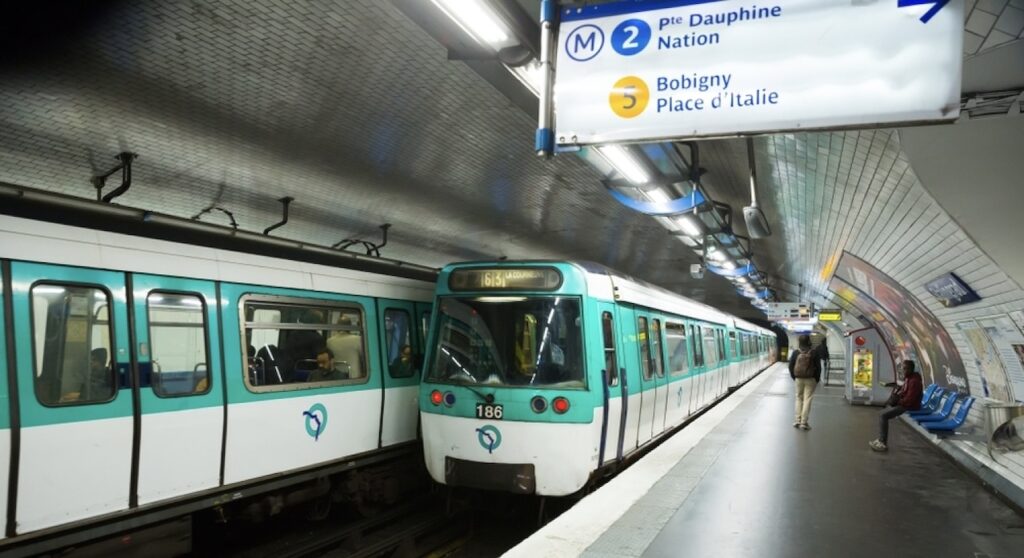
Reading the Metro Map
A crucial skill for any metro user is the ability to read the metro map effectively. The map’s design is intuitive, but it requires a bit of practice to become proficient. Each metro line is color-coded and numbered, with stations clearly marked along the routes. Transfer stations, where you can switch from one line to another, are highlighted, often with larger icons or specific symbols indicating available connections.
Start by identifying your current location and your destination on the map. Trace the route you’ll need to take, noting any transfer points along the way. For example, if you’re traveling from the Louvre to the Eiffel Tower, you’d take Line 1 from Palais Royal – Musée du Louvre to Charles de Gaulle – Étoile and then transfer to Line 6 towards Bir-Hakeim.
Planning Your Journey
Planning your journey in advance can save time and reduce stress. Numerous apps and websites provide real-time metro information, route planning, and service updates. Apps like Citymapper and Google Maps are particularly useful, offering step-by-step directions, estimated travel times, and alerts for any service disruptions.
When planning your route, consider the time of day and potential crowd levels. During peak hours, certain lines and stations can become extremely crowded. If you prefer a more relaxed journey, try to avoid traveling during rush hours (8-10 AM and 5-7 PM). Additionally, checking for any planned maintenance or service interruptions can help you avoid unexpected delays.
At the Station
Navigating the station itself is another critical aspect of using the Paris Metro. Upon arrival at a station, follow signs indicating the direction of your desired line. These signs are color-coded and marked with the line number, making them easy to spot. If you’re unsure, look for maps or ask station staff for assistance.
Once you’ve validated your ticket, proceed to the platform. Pay attention to the direction of travel, which is indicated by the name of the last station on the line. For example, if you’re taking Line 4 towards the south, the direction will be marked as “Mairie de Montrouge.”
On the platform, stand clear of the doors and allow passengers to exit before boarding. This practice not only shows courtesy but also speeds up the boarding process. During busy times, position yourself along the length of the platform to avoid crowding near the doors.
Useful Tips and Etiquette

Metro Etiquette
Understanding and practicing proper metro etiquette will enhance your experience and that of fellow passengers. One fundamental rule is to stand on the right when using escalators, allowing those in a hurry to pass on the left. This simple act of courtesy can significantly improve the flow of foot traffic in busy stations.
Offering your seat to those in need is another important aspect of metro etiquette. Designated priority seats are available for elderly, pregnant, or disabled passengers. However, if you notice someone who could benefit from a seat, offering yours is always appreciated.
Keeping noise levels to a minimum is also essential. Avoid loud conversations and use headphones for music or phone calls. This consideration helps maintain a pleasant environment for everyone.
Peak Hours
The Paris Metro is busiest during peak hours, typically from 8 to 10 AM and 5 to 7 PM. During these times, trains can become extremely crowded, and stations bustling with commuters. If you can, plan your travel outside these hours for a more comfortable experience. If traveling during peak times is unavoidable, try to board at the ends of the platform where trains tend to be less crowded.
Carrying Luggage
Navigating the metro with luggage can be challenging, especially during busy periods. Travel light whenever possible to make your journey more manageable. If you have larger luggage, look for stations equipped with elevators or ramps. Not all stations have these facilities, so it’s worth checking in advance. Additionally, be mindful of other passengers and avoid blocking aisles or doors with your bags.
Safety and Accessibility

Safety Tips
While the Paris Metro is generally safe, it’s always wise to take precautions. Stay aware of your surroundings and keep an eye on your belongings. Pickpocketing can occur, especially in crowded areas, so it’s important to secure your valuables. Use a crossbody bag or money belt to keep your items close and out of reach.
Avoid traveling in empty carriages late at night. Instead, choose carriages with more passengers for added security. If you ever feel uncomfortable, move to another carriage or seek assistance from metro staff.
Accessibility
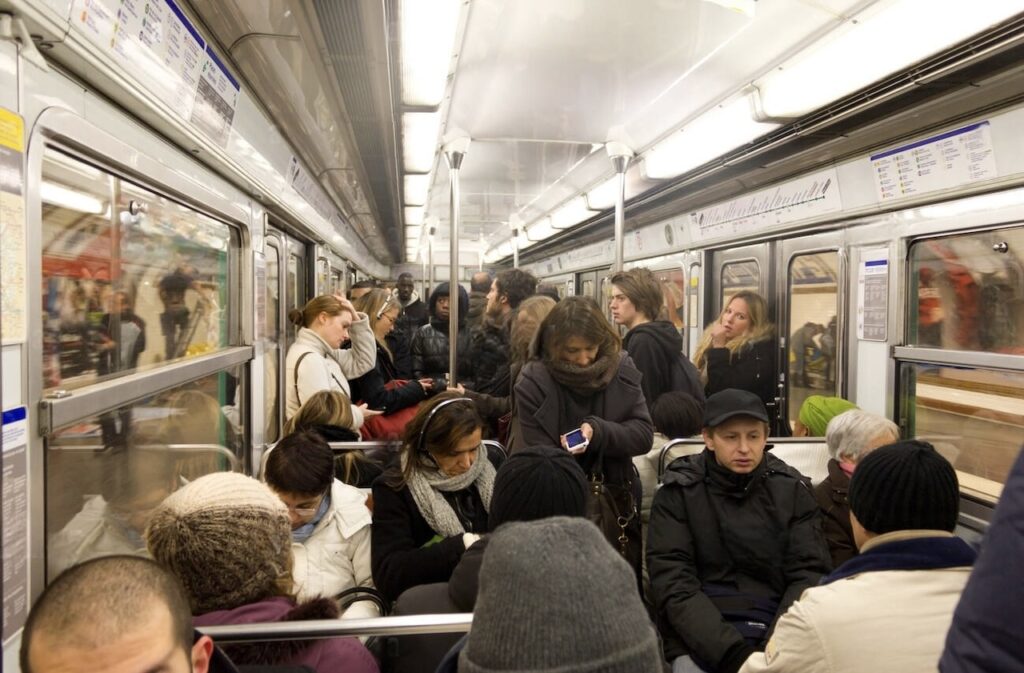
Paris is continuously improving its metro system to accommodate passengers with disabilities. While not all stations are fully accessible, many are equipped with elevators, ramps, and other facilities. Major stations and newer lines are more likely to offer these amenities. Check the RATP website or app for information on accessible stations and plan your route accordingly.
If you require assistance, don’t hesitate to ask station staff. They can provide information on accessible routes and help you navigate the station. Some stations also have designated areas where you can request assistance via intercom.
Alternative Transportation Options
Buses
In addition to the metro, Paris has an extensive bus network that complements the metro system. Buses can be a more scenic way to travel, offering views of the city that you might miss underground. The same tickets used for the metro can be used on buses, making transfers seamless.
Night buses, known as Noctilien, operate when the metro is closed, ensuring that you can still get around the city late at night. The Noctilien network covers major routes and can be a lifesaver if you miss the last metro.
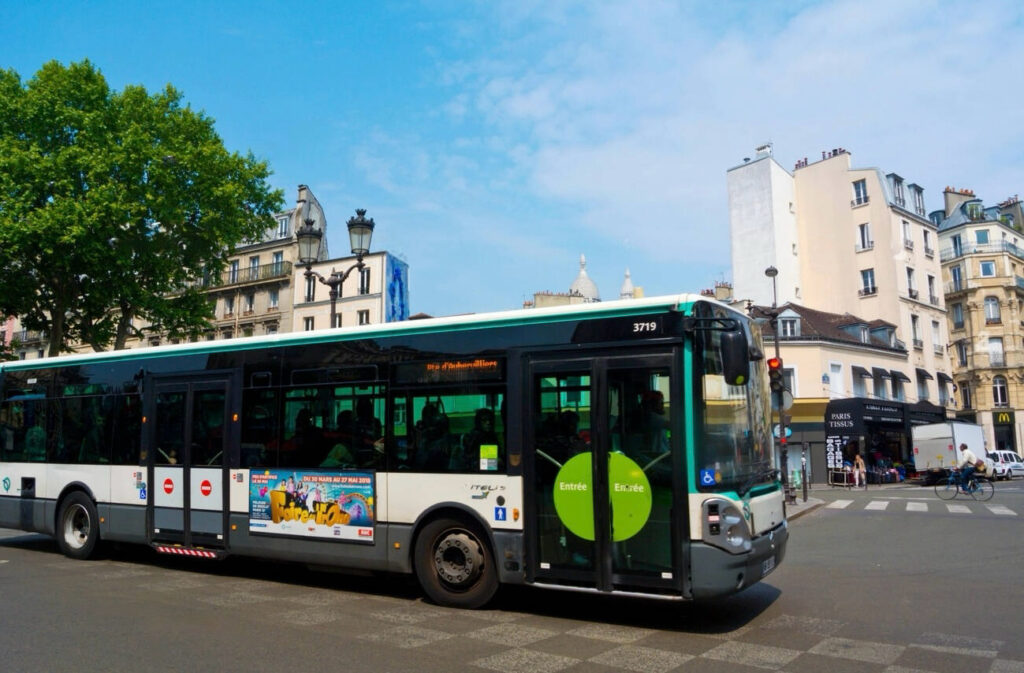
Trams
Paris’s tram network primarily serves the suburbs, but it can be an interesting and scenic way to travel. Trams are modern, comfortable, and offer a glimpse into life outside the city center. They connect to the metro and RER networks, providing comprehensive coverage of the greater Paris area.
RER Trains
RER trains are a regional express network that extends beyond the city limits, reaching suburban areas and major attractions like Disneyland Paris and Versailles. Understanding the RER system can greatly enhance your travel experience, especially if you plan to explore beyond central Paris. Different zones require different tickets, so make sure to purchase the correct fare for your destination.
Bicycles and Scooters
Paris is increasingly becoming a bicycle-friendly city, with numerous bike lanes and rental options. Services like Vélib’ Métropole offer easy-to-rent bicycles available throughout the city. Electric scooters are also a popular choice, with various companies providing rentals via mobile apps. These options are great for short distances and offer a flexible way to see the city.




